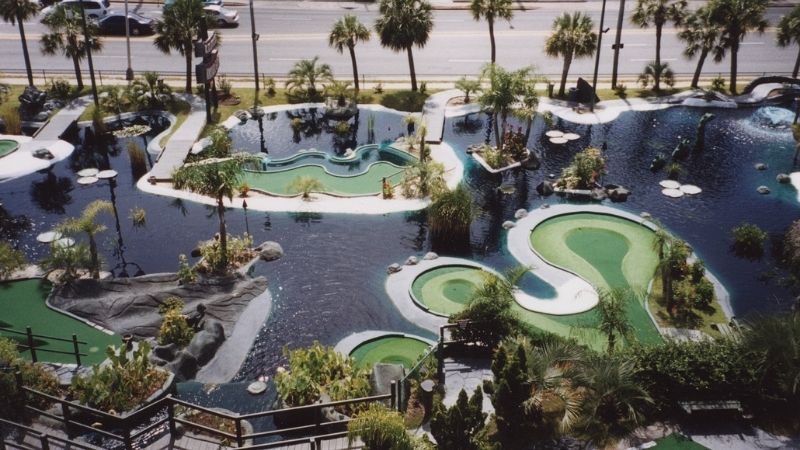

Golf can be a lifetime journey that will require attention to detail. The abundance of equipment and gadgets on the market today may make it confusing and challenging to decide what you need. Our golf experience helped us develop this guide to kickstart your golf adventure.
Try to look like a pro whenever possible - fake it till you make it as the saying goes. It is like going to an interview or an office except for no jeans, even on a Friday.
When just starting out, try to borrow or rent clubs if possible before you spend the big bucks. You can always start by purchasing a used set and later get a new one.
Golf etiquette is essential just like the dress code. Showing respect to other golfers and the facilities will go a long way. Most courses have their own set of rules, especially private ones.
There is an endless market for golf accessories with more on the way. Most do work in some way or another and some may be superfluous. It is just a matter of how much you want to try and spend.
Golf shoes, golf glove, proper attire, headwear
1. Shoes can have spikes where spikes might be replacable or be spikeless. May also have waterproof rating - helps in wet conditions. Some shoes now come without laces and have a special mechanism instead.
2. Keep in mind that darker colored shoes may result in attracting and trapping more heat from the sun as opposed to lighter colored shoes.
3. Whatchout for ankle cutout height. Since you need more mobility each shoe has its own ankle comfort and might feel different.
4. Natural leather shoes may stain easier once wet.
5. Price may not be everything.
6. Playing barefoot or with flip flops may result in poor traction and posture balance.
1. If you are hitting a golf ball from your right side you will need a left handed glove. And if you are hitting the ball from your left side you will need right handed glove.
2. You only use gloves on long shots when using driver, woods, irons, wedges. You do not need to ware a glove when putting.
3. Goves may be made out of natural leather or be synthetic.
4. Look out for thickness in the glove and how much heat it will trap.
5. Gove width or size is important and should feel snug on your hand.
6. Most gloves are white but there are other new colors on the market.
7. The higher the price the better the glove is in general.
8. You probably would not want to use gloves on two hands or have no glove at all.
9. If you getting blisters on your hands then something is not right with the grip or the size of the glove.
1. Most courses require a shirt with a collar. It can be short sleeve or long. Cannot be sleeveless for men.
2. For bottom it is best to ware pants for sun protection, bug protection and it looks more pro.
1. Headware may keep you cool and protect you from sun damage.
2. Headware may help to reduce glare.
3. An umbrella attached to the push cart also does the trick.
4. Headware most needed on a course without any shade.
1. Rain gear is super light and goes over your normal golf clothes to keep you dry in case of rain.
Golf bag, Driver - #1 Club, Irons - full or partial set, Sand wedge, Putter, Golf balls, Tees, Divot repair tool, Ball marker
1. You need a bag to carry all your clubs and accessories. Standing bag is best if you plan to walk and carry your bag.
2. More expensive bags tend to last longer and lighter in weight.
3. The non standing bags normally placed on carts.
4. Some bags can have individual club deviders holders which makes it easier to take clubs out and be organized.
1. Driver is needed for longest shots normally taken as a first shot.
2. New drivers are super expensive so it is best to get used or last year's model.
3. Most important thing is to figure out the flex of the shaft.
4. Most golfers pick a driver based on looks, sound, performance, price.
5. Regular flex is better for slower swing speeds and stiff for faster swing speeds.
1. Irons are needed for different distance shots.
2. You can start with a partial set irons: 5, 7, 9 and W - wedge.
3. Each iron has a number or letter code. See the manifacture's website for specifications.
4. 9 iron can range from 100-150 yards or more depnding on a golfer. The lower the number the lower angle degree and the longer the ball will travel.
5. Regular flex is better for slower swing speeds and stiff for faster swing speeds.
1. Wedges are used for short shots around the green or green approach shots.
2. Having a wedge that can get you out of sand is a must. Normally 56-64 degree wedge would do.
1. There are different shapes and sizes for putters. Pick the one that looks and fits most comfortable to you.
2. Putters may get pricy so a used one may do.
1. White balls are a standard. Yellow balls a bit easier to see although it depends on the conditions and course.
2. Pick soft balls in the range about $1 per ball when just starting out.
3. No need to get most expensive balls.
1. You will need to get wooden or plastic tees to put the ball on when taking first shot.
2. You will need a metal divot repair tool to repair damaged grounds on the green from ball marks.
3. Club brush and towel might also good to have.
1. Used Clubs: 2nd Swing Golf
2. Try Clubs: Global Golf
3. Club Repair: PGA Tour Superstore
4. Custom Clubs: The Golf Warehouse
5. Golf Galaxy
Fore - not FORD, No more than 2 practice swings, Be ready to take your shot, Repair divots, Stay away from hazards woods or any water - they are hazards for a good reason.
1. If you hit a shot and it goes towards other golfers even indirectly you must yeil FORE. It is like look out code word. Other golfers will cover their head and face in case the ball will come close.
1. To speed the pace of play you should not take more than two practice swings or take a long time to take a shot.
1. To upkeep golf facilities for everyone you should repair any damage caused to the grass.
1. It is best not to take more than couple of minutes to look for the lost ball.
2. Sometimes the ball will be lost on the fairway even though it was visible on landing. In this case your group should allow you to take a drop without a penalty.
3. Try no to get upset if you lost your favorite ball and instead focus on winning the bigger picture.
1. Golf carts should be carefully driven.
2. Stay away from woods and water hazards. They are hazards for a reason. It is not woth to risk an injury looking for an old $1 ball.
Sunglasses, GPS or Range Finder
1. GPS or Range finder will come handy to tell the distance to the flag.
1. Sunglasses will reduce glare and might make it easier to track a golf shot into the sunrise or sunset.


Start at a non-grass mat driving range and then move onto the grass one
Beach is always an option to try sand shots but a practice facility with short game practice area is best
Some driving ranges may have simulators that you can try and play a full course
Try to pick an easier course with not a lot of water or woods